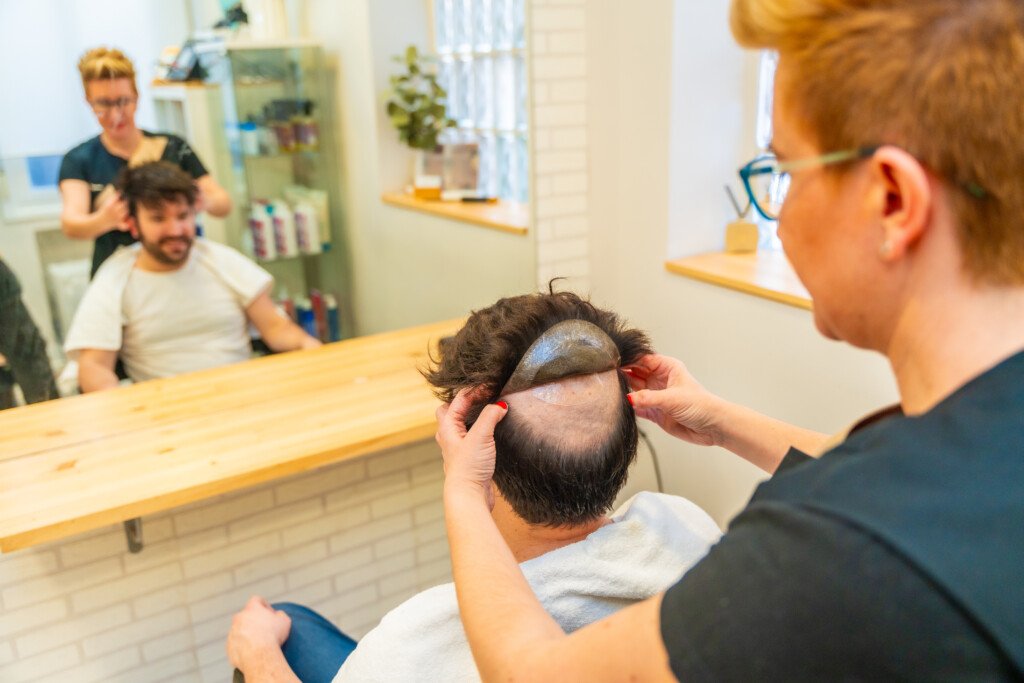Hair loss is a concern for millions of people worldwide. Whether caused by genetics, stress, or medical conditions, losing hair can affect self-esteem and confidence. Fortunately, hair transplants and other treatments offer effective solutions. If you are considering a hair transplant, understanding the procedure, benefits, and limitations is crucial. Here are the top five facts you should know about hair transplants and treatments, along with real-life examples and expert insights.
Hair Transplants Use Your Own Hair for Natural Results
Unlike wigs or artificial implants, hair transplants use your own hair follicles, typically taken from the back or sides of your scalp. These donor areas have hair that is resistant to balding, making them ideal for transplantation.
For example, Hollywood actor John Travolta underwent a hair transplant to combat his receding hairline. His results were successful because the transplanted hair was from his own scalp, ensuring a natural appearance. Since the procedure uses real hair, the new growth blends seamlessly with existing hair, giving a fuller and thicker look.
There Are Two Main Types of Hair Transplant Techniques
The two most commonly used methods for Hair Transplants are Follicular Unit Transplantation (FUT) and Follicular Unit Extraction (FUE). Both procedures aim to restore hair but have different approaches and recovery times.
- Follicular Unit Transplantation (FUT) involves removing a small strip of skin with hair follicles from the donor area. The follicles are then carefully implanted into the balding areas. This method is ideal for individuals who need significant hair restoration. However, it leaves a thin linear scar that may be visible if you keep your hair very short.
- Follicular Unit Extraction (FUE) on the other hand, extracts individual hair follicles one by one and implants them into the target areas. The main advantage of FUE is that it does not leave a large scar, making it a popular choice for those who prefer shorter Hairstyles.
For example, soccer star Wayne Rooney opted for FUE to restore his thinning hairline. His procedure was successful, and he proudly shared his results with fans, encouraging many others to consider the treatment.
Hair Transplants Take Time to Show Visible Results
A hair transplant is not an instant solution; it requires patience. After the procedure, the transplanted hair will fall out within a few weeks—this is completely normal and known as “shock loss.” The real growth begins after three to four months, with full results visible in 9-12 months.
Many YouTubers and influencers who have undergone hair transplants document their progress online. Watching their recovery journey can help you set realistic expectations about the timeline and transformation process. It is essential to follow your surgeon’s advice during this period to achieve the best possible outcome.
Not Everyone Is a Suitable Candidate for a Hair Transplant
While hair transplants are effective, they are not suitable for everyone. A good candidate should have a stable donor area with enough hair for transplantation. Having realistic expectations about the results is also important, as a hair transplant does not guarantee a full head of thick hair but rather a natural-looking improvement. Additionally, individuals with serious medical conditions that could affect healing, such as uncontrolled diabetes or autoimmune diseases, may not be suitable candidates. It is essential to consult with a specialist who can assess your hair loss pattern and overall health to determine whether a hair transplant is the right solution for you.

Proper Aftercare Is Essential for Long-Lasting Results
After a hair transplant, proper care is crucial to ensure successful results. Patients must follow post-surgery guidelines. Avoiding strenuous activities and heavy sweating for at least two weeks is important to prevent complications. Sleeping with the head elevated helps reduce swelling, and washing the scalp gently, as instructed by the doctor, ensures that the transplanted hair follicles remain undisturbed. Avoiding alcohol and smoking is also crucial, as these can slow down healing and affect the final results.
For example, Indian actor Salman Khan reportedly underwent a hair transplant but had to redo the procedure due to improper aftercare. This highlights the importance of following medical advice to maintain results.
Are There Non-Surgical Alternatives to Hair Transplants?
Not everyone is ready for a hair transplant, and some may prefer non-surgical alternatives. Treatments like Platelet-Rich Plasma (PRP) therapy, low-level laser therapy, and hair growth medications such as Minoxidil and Finasteride are popular options. PRP therapy involves drawing a patient’s blood, processing it, and injecting the platelet-rich plasma into the scalp to stimulate hair growth. Many celebrities and influencers have endorsed these treatments as effective solutions for early-stage hair loss.
What Are the Risks and Side Effects of Hair Transplants?
Like any medical procedure, hair transplants carry some risks. Common side effects include swelling, redness, and temporary numbness in the treated areas. In rare cases, infections or scarring may occur if the procedure is not performed correctly. Choosing a reputable clinic and an experienced surgeon reduces the risk of complications. Patients should also strictly follow aftercare instructions to ensure a smooth recovery process.
Is a Hair Transplant Right for You?
A hair transplant is a life-changing procedure for many individuals struggling with hair loss. However, understanding the process, timeline, and aftercare is essential before making a decision. Consulting with a qualified hair specialist will help determine if a transplant is the best option for you. With the right treatment and proper care, you can restore your hair and regain your confidence for years to come.
FAQs
New hair starts growing in 3-4 months, with full results visible in 9-12 months.
Yes, transplanted hair is permanent and grows naturally for a lifetime.
The procedure is painless with local anesthesia, but mild discomfort may occur after surgery.





